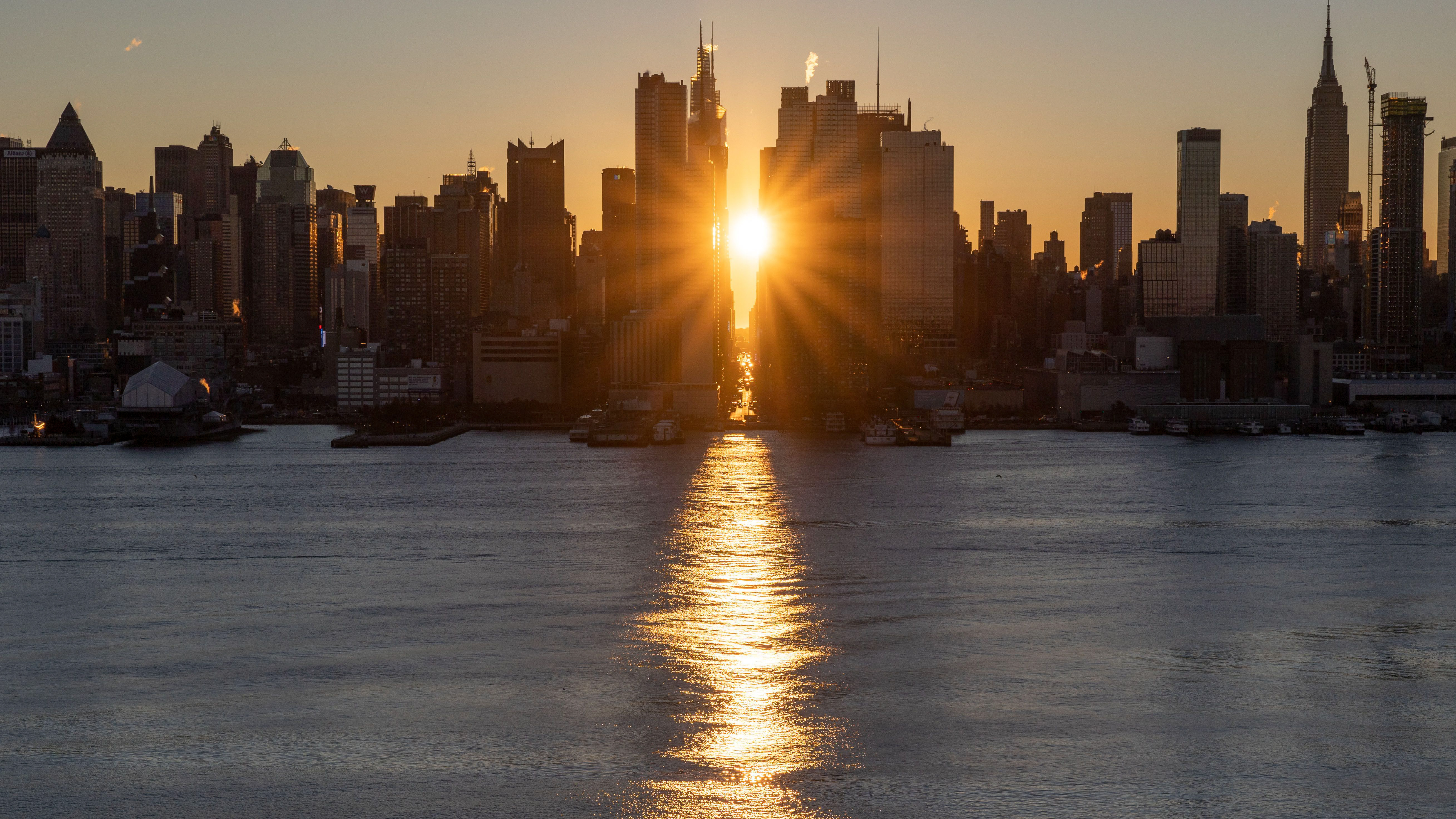
It’s almost time for the sun to ‘kiss the grid’ in New York City as ‘Manhattanhenge’ strikes again. You might think alignments are the kind of thing you’re more likely to see at Neolithic sites like Stonehenge, which aligns with the rising sun during solstices. However, planetary geometry and urban design mean that one major city is ideal for tracking the movements of the sun in the sky in a somewhat similar manner – with occasionally very dramatic consequences.
Here’s everything you need to know to see and photograph Manhattanhenge:
Read: Night photography techniques, tips and tricks
What is Manhattanhenge?
Manhattanhenge is the urban phenomenon of the sun low on the horizon between the skyscrapers in Manhattan, New York City. For four sunsets and four sunrises every year it’s possible to position yourself on any of the east-west crossing numbered streets on the borough's grid to see the wondrous site. In practice, few aside from committed photographers ever bother with the sunrises (which occur in the depths of winter around December 5 and January 8), so Manhattanhenge in its practical sense relates largely to the four sunsets. They attract huge crowds of locals and tourists, and they come in pairs. There are two Manhattanhenge sunsets three weeks before June’s solstice and two more Manhattanhenge sunsets three weeks after. The exact times and dates for Manhattanhenge are produced by Jackie Faherty, an astrophysicist at NYC’s American Museum of Natural History.

Manhattanhenge: what happens
Manhattanhenge sunsets happen on two successive nights about six weeks apart. One of each pair sees a ‘half-sun’ set dead on the grid between skyscrapers, so what you see is the top half of the sun. This is the ‘kiss the grid’ moment. The following or preceding night – depending on the time of year – the ‘full sun’ occurs, with all of the sun’s disk visible between the skyscrapers just before it touches the horizon.
When is Manhattanhenge 2024?
Here are are four Manhattanhenge sunsets (in the west) every year. The dates for 2024 are:
• Tuesday, May 28: half-sun Manhattanhenge sunset (8:21 p.m. EDT)
• Wednesday, May 29: full sun Manhattanhenge sunset (8:21 p.m. EDT)
• Wednesday, July 12 (8:21 p.m. EDT): full sun Manhattanhenge sunset
• Thursday, July 13 (8:20 p.m. EDT): half-sun Manhattanhenge sunset
Read: The best lenses for astrophotography

Where's the best place to shoot Manhattanhenge?
Clouds can instantly ruin the spectacle, but it’s best to position yourself at intersections that have interesting buildings for the sun to set between. Any east-west street is fine, with better shots the farther east you position yourself. It’s best seen above 14th Street and below 155th Street, with prime spots being cross streets including 14th, 23rd, 34th, 42nd and 57th streets, according to AccuWeather.

What's the best lens for shoot Manhattanhenge?
Although you can use absolutely any camera or smartphone, a zoom lens is handy for taking both wide-angle images of the cityscape – including some iconic buildings – and a close-up of the ‘kiss the grid’ moment. Nikon recommends using a tripod for slow shutter speeds or increasing the ISO for handheld images. Consider creating a sunburst by using a camera in Aperture priority or Manual Mode with a small f-stop of f/11 or higher.
Are there similar events in other cities?
Although Manhattanhenge is the most famous there are a lot of other very similar phenomena. Any city that has a grid system that’s orientated east-west will have some kind of ‘henge’ effect on similar dates including California Henge, Bostonhenge, Chicagohenge and Torontohenge.







